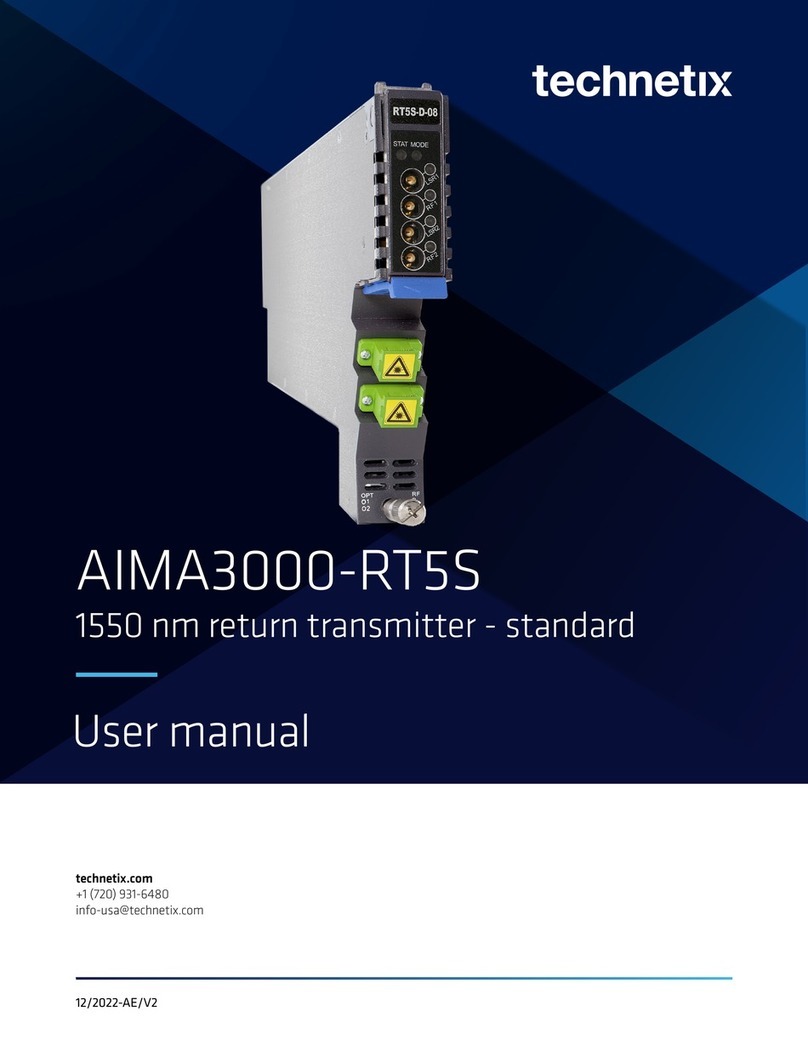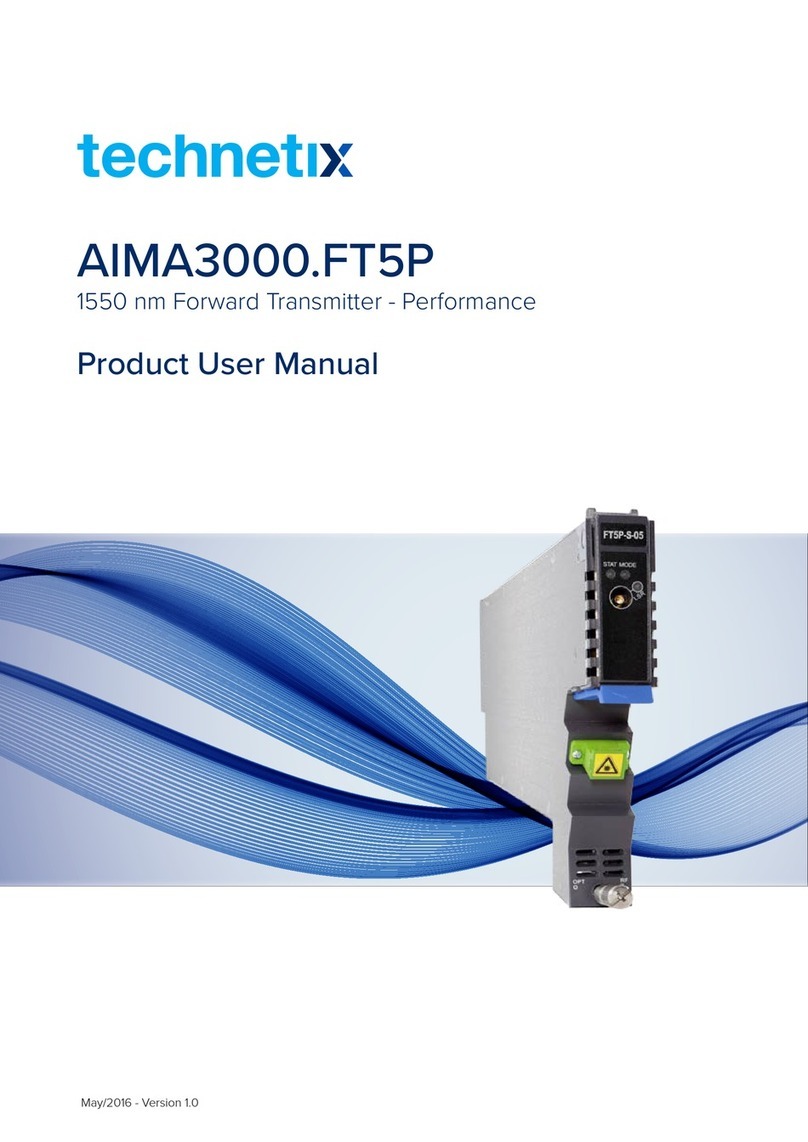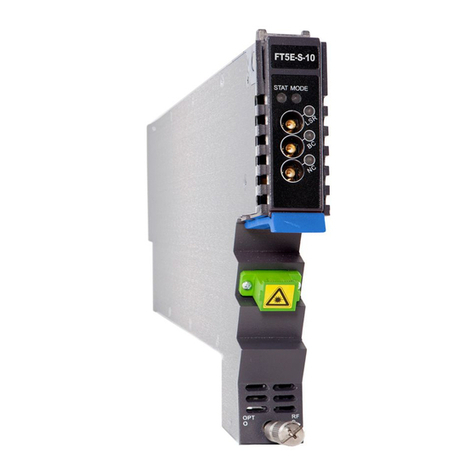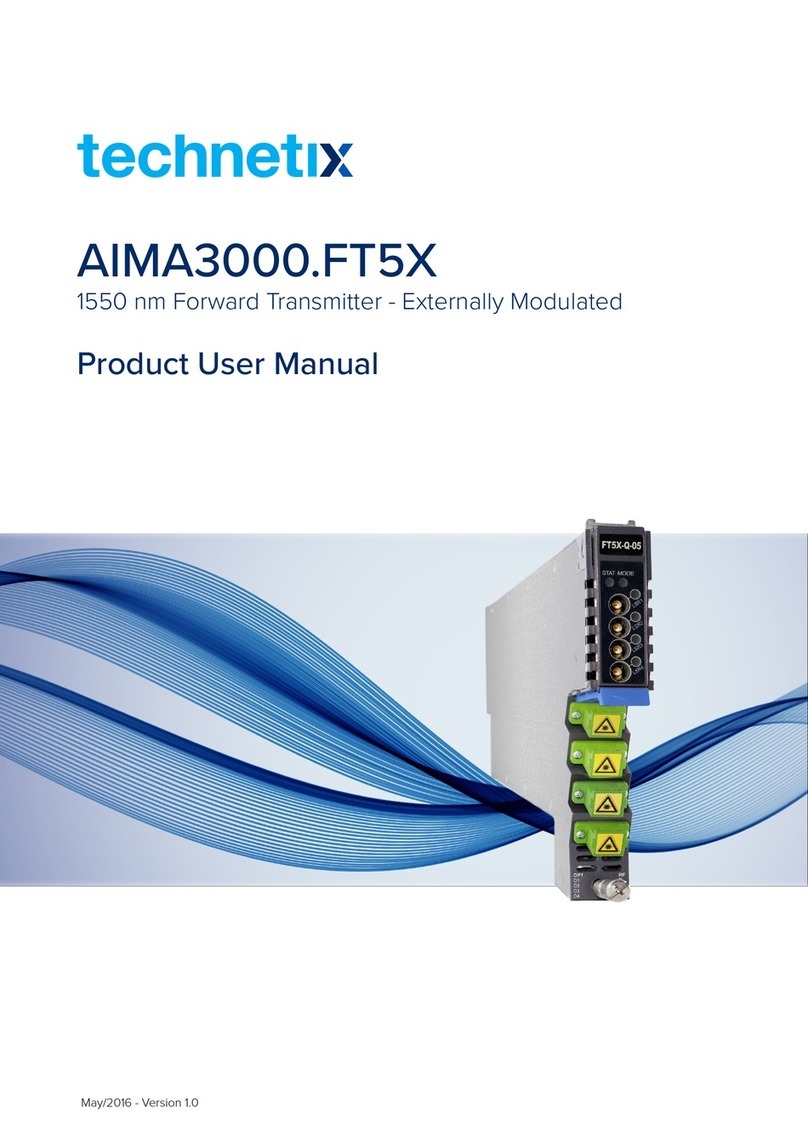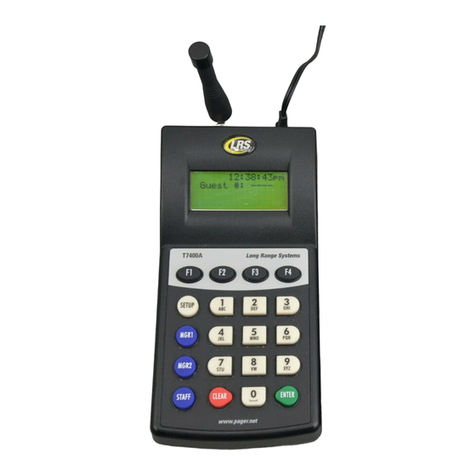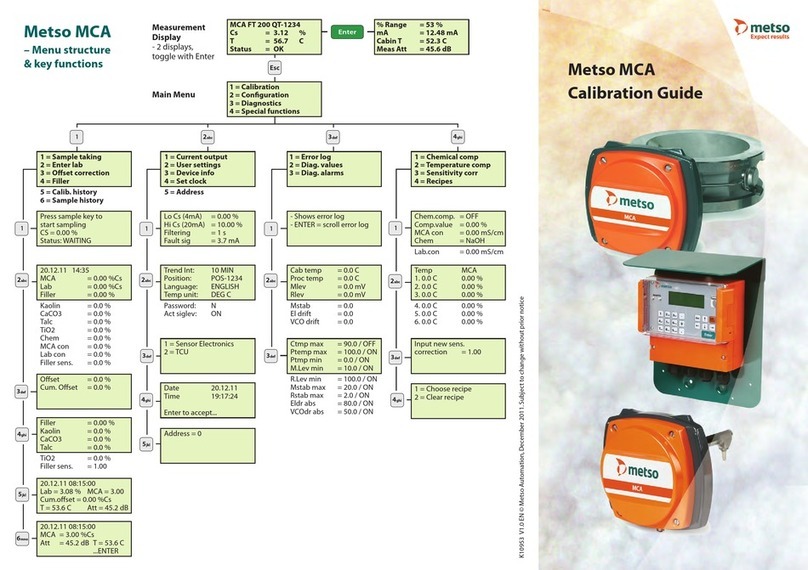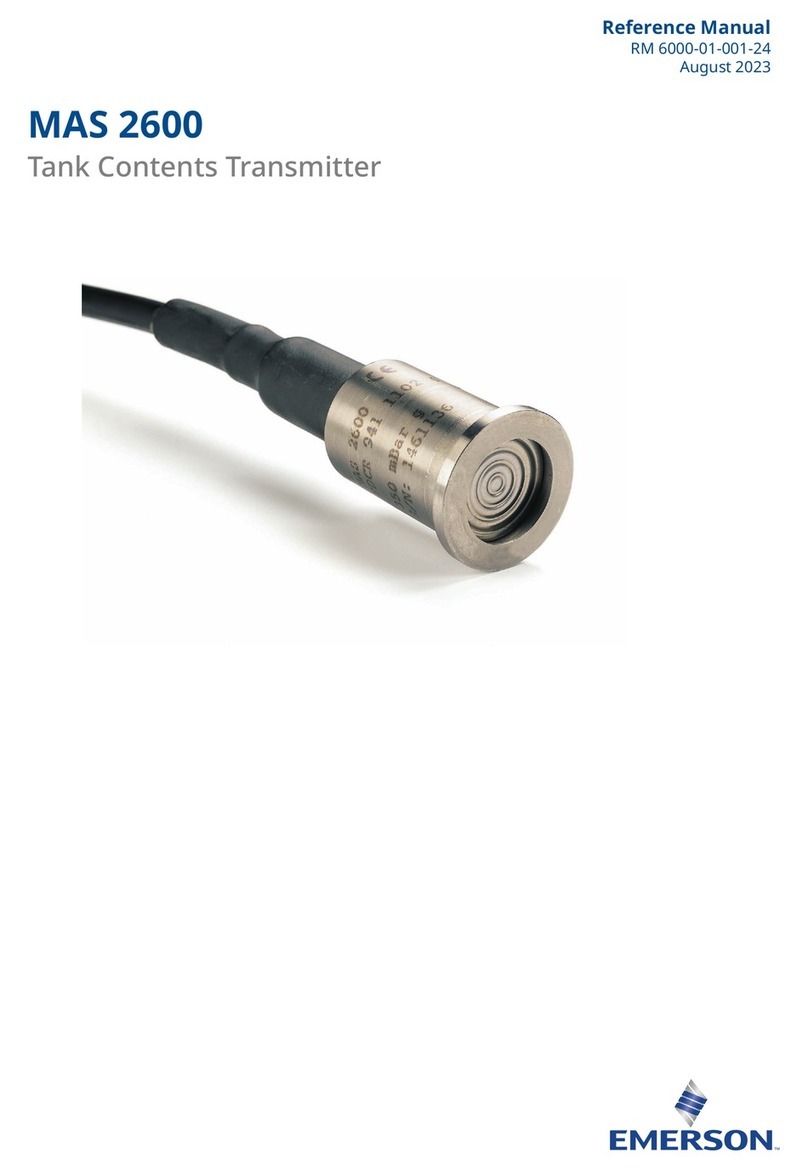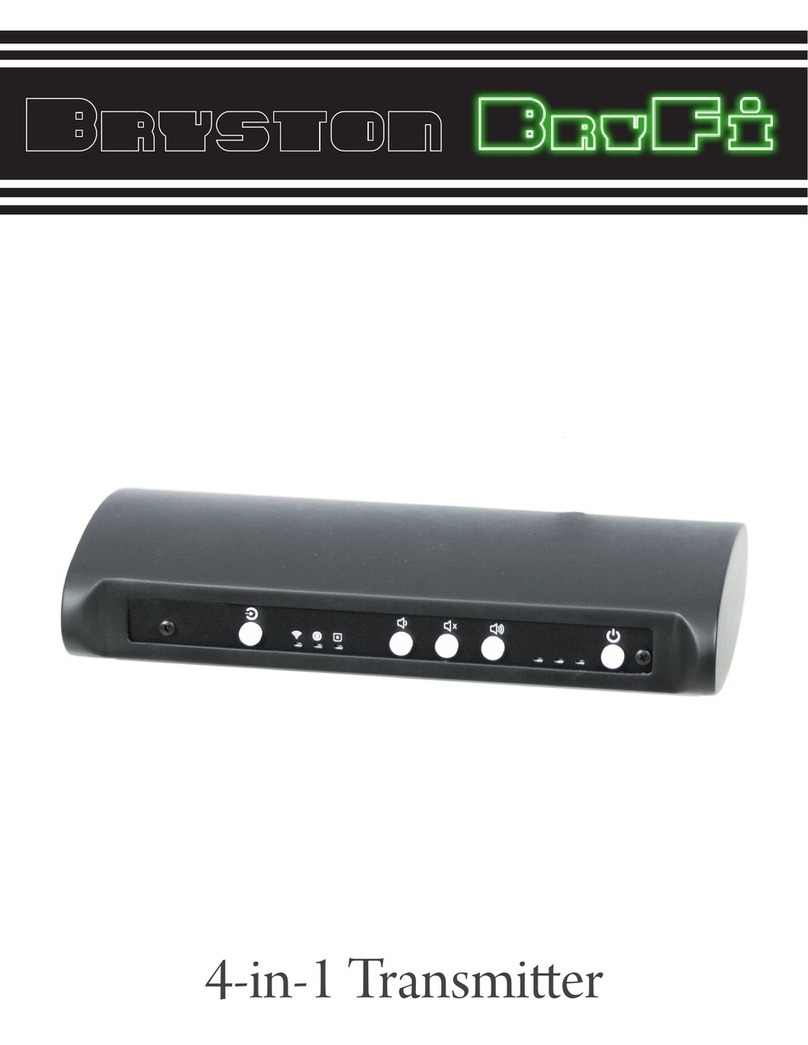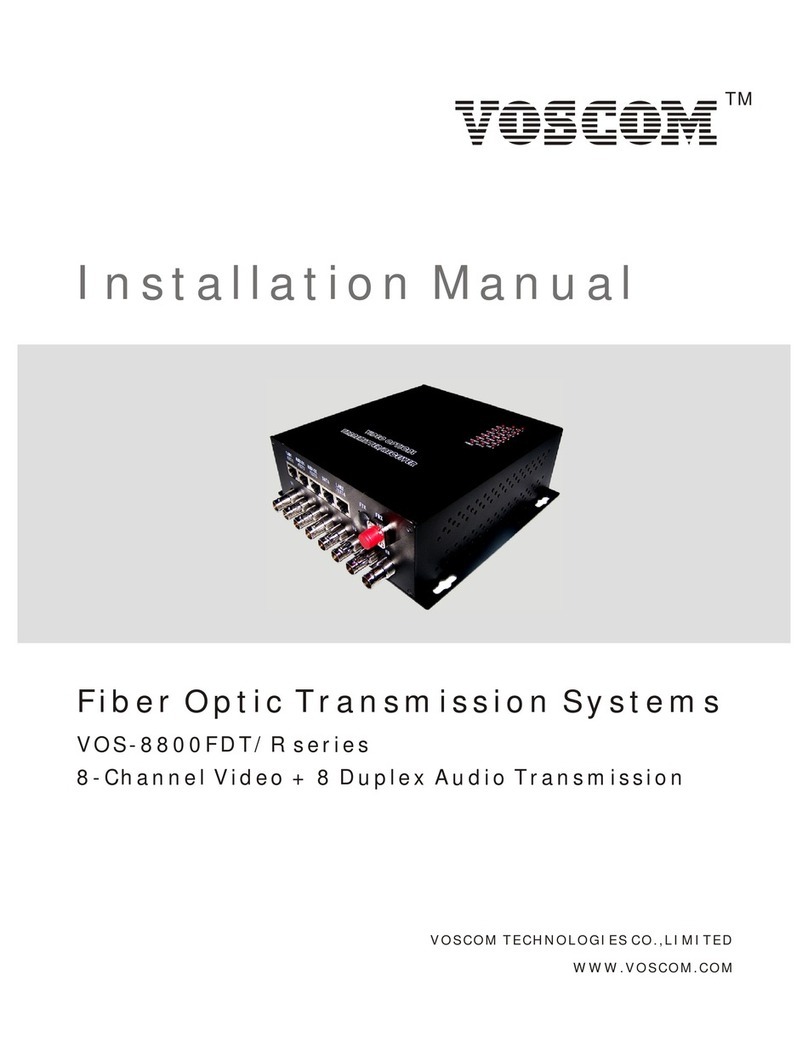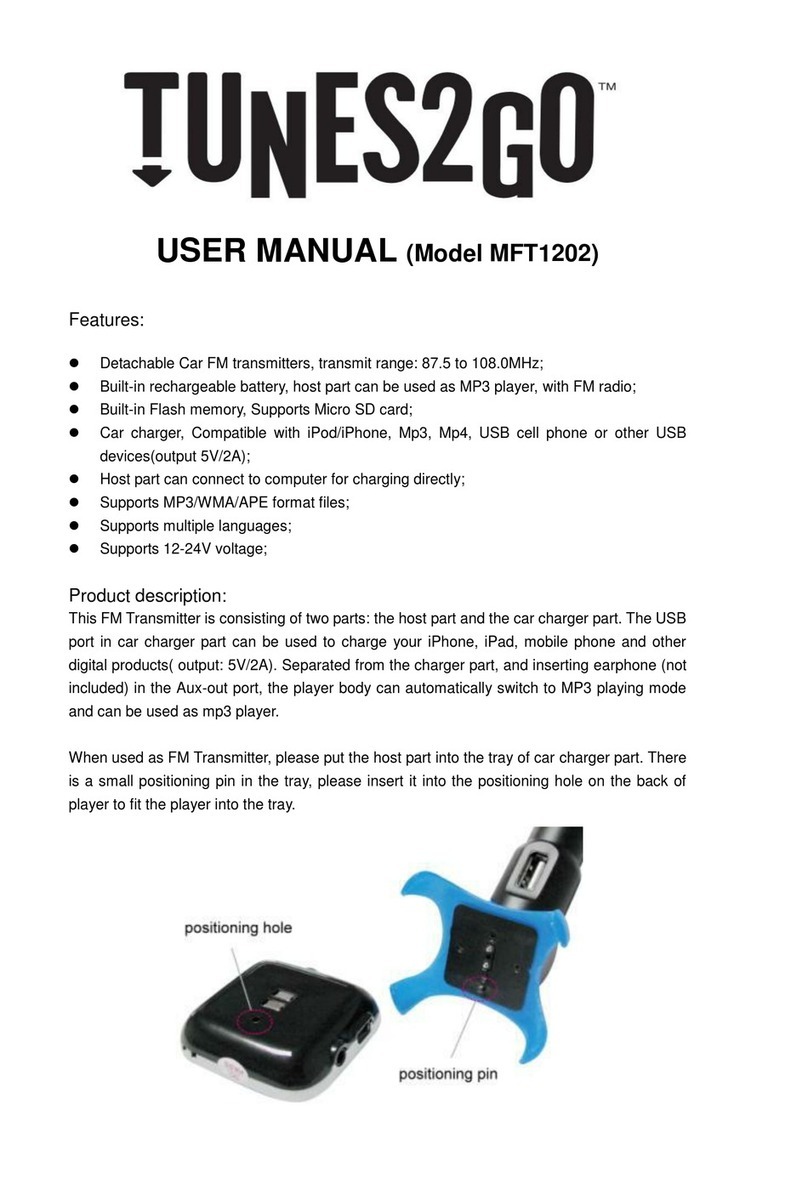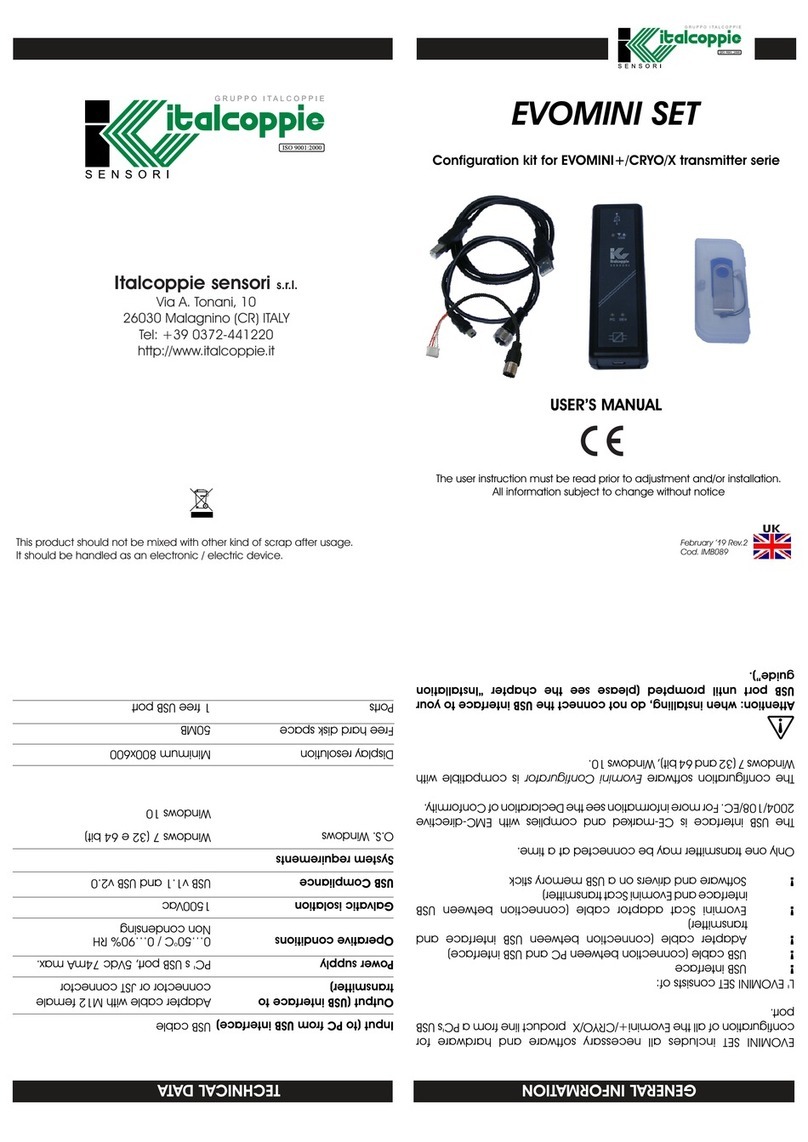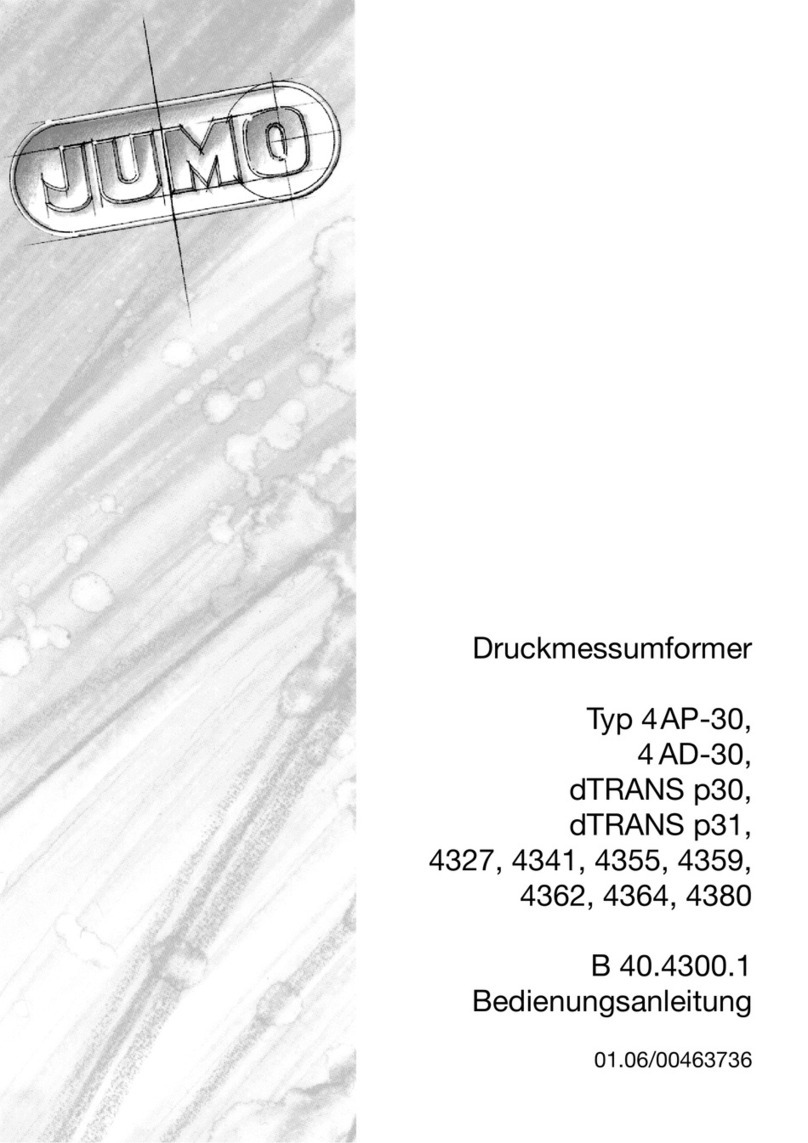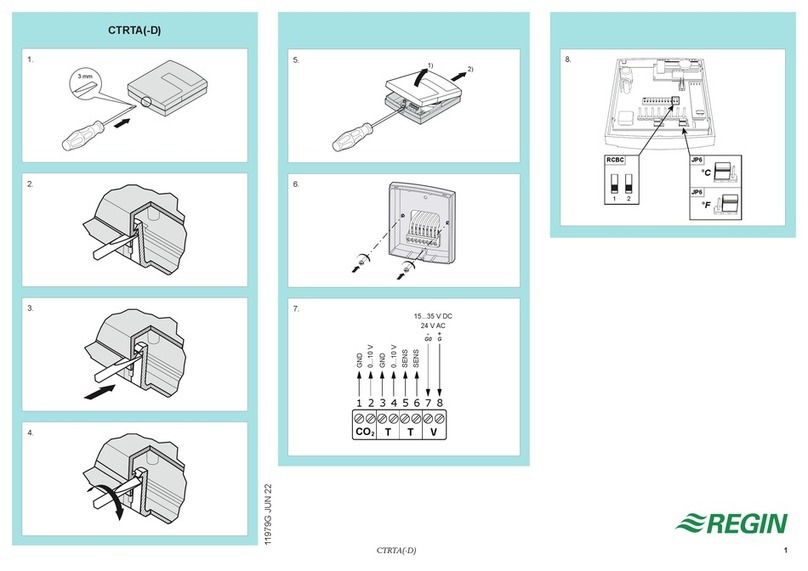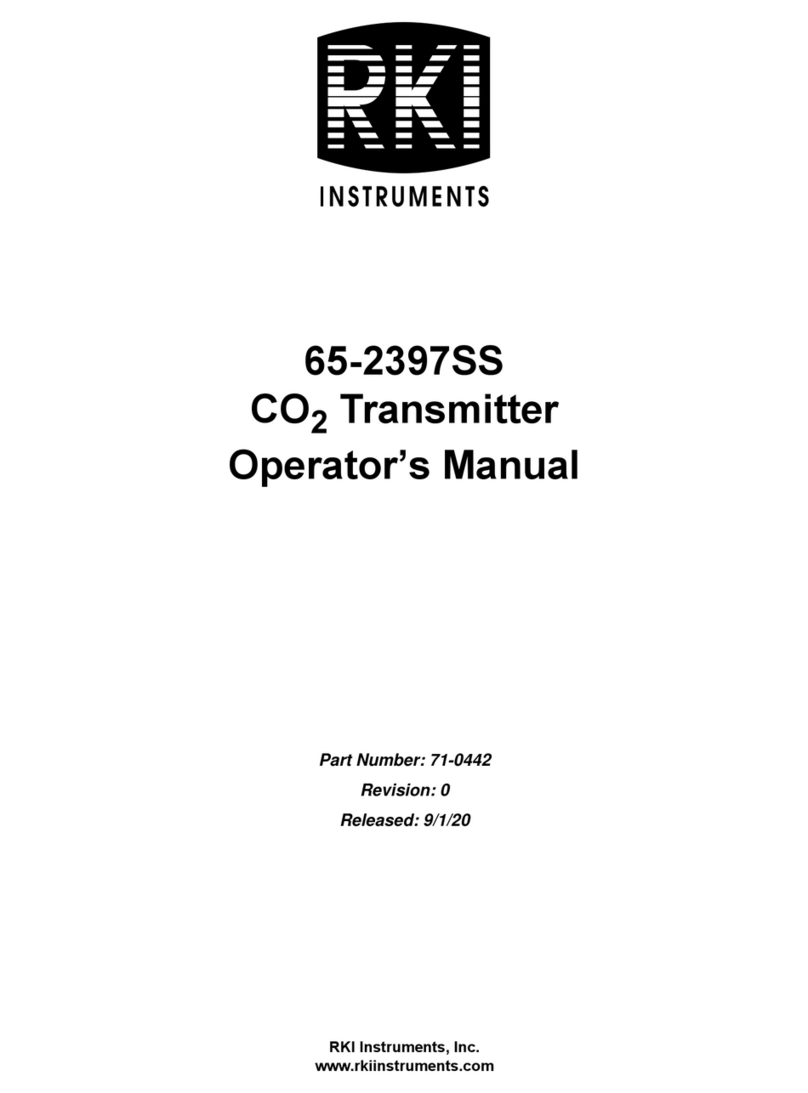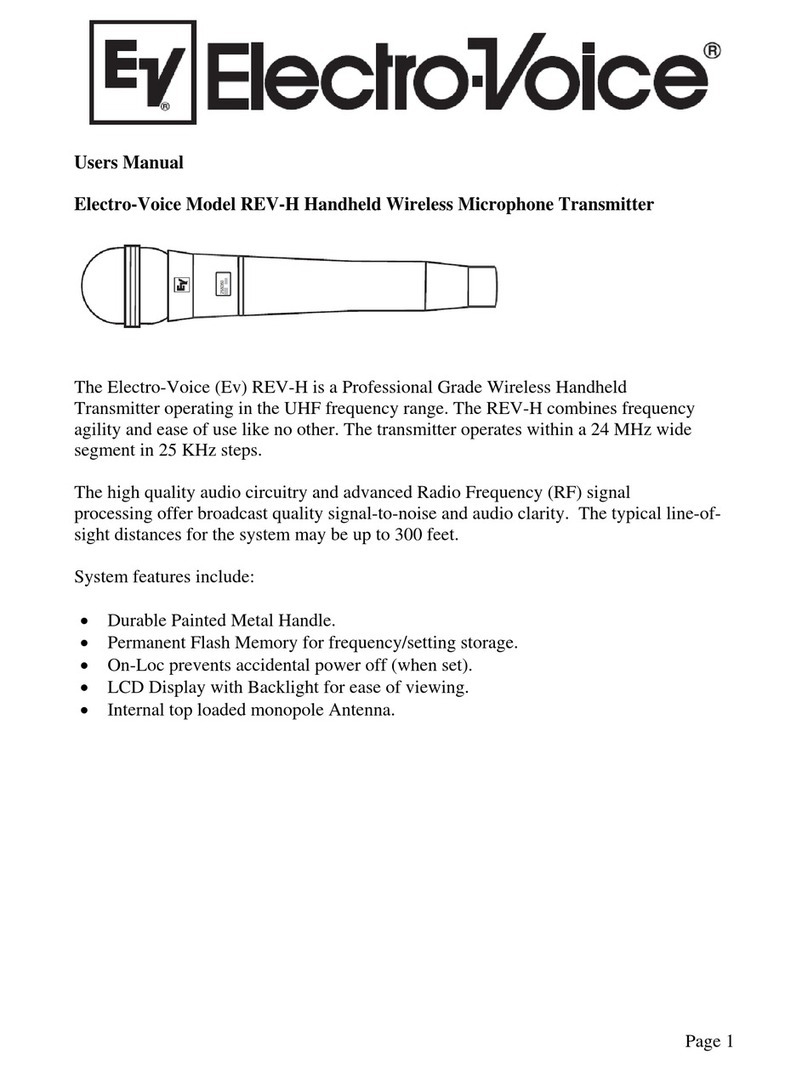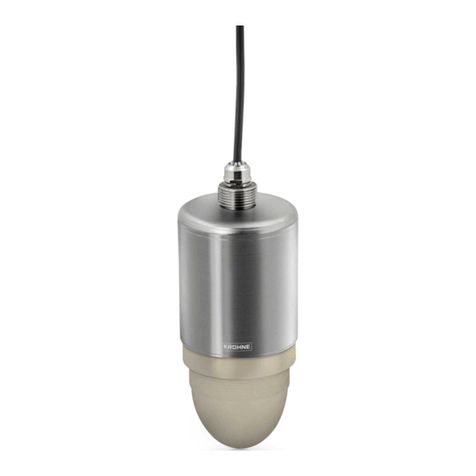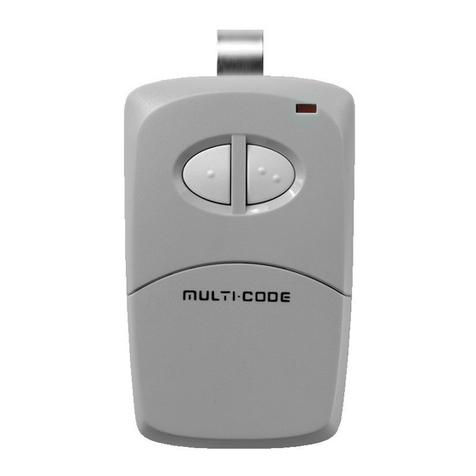technetix AIMA3000.FT5S User manual

technetix.com
+1 (720) 931-6480
02/2023-AE/V1
User manual
AIMA3000-FT5S
1550 nm single optical forward transmitter module

Contents
Chapter 1 This manual 5
1.1 Chapter Overview 5
1.2 Related Documentation 5
1.3 Document Conventions 5
1.4 Technical Support 5
Chapter 2 Precautions 5
Chapter 3 Overview 7
3.1 Product Description 7
3.2 Product Key Features 7
3.3 Specications 8
3.4 Order Details 11
Chapter 4 Module characteristics 12
4.1 Module Appearance and Port Layout 12
4.1.1 Overview 12
4.1.2 Front Panel Layout 13
4.1.3 Rear Panel Layout 13
Chapter 5 Installation 17
5.1 Preparatory Work for Installation 17
5.2 Unpacking 17
5.3 Module Installation 17
5.4 Connecting Optical Cabling 19
5.4.1 Using the Sliding Fibre Guide 19
5.4.2 Using the Fibre Tray 21
5.4.3 Cleaning the Fibre Connector Ends and
Front-panel Optical Ports 22
5.4.4 Connecting the Optical Fibres 22

Contents
5.5 Check Module LEDs 23
5.6 Test the RF Input Signal 23
5.7 Test the Optical Output Signal 24
Chapter6 ModuleConguration&Alarmsetup 25
6.1 PortCongurationscreen 25
6.1.1 Determine RF power to RF input port 27
6.2 Applying RF settings to FT5S transmitter MGC mode 31
6.2.1 SampleRFload80channelsanalogueRFload 31
6.2.2 Sample RF load 42 channels analogue RF load 31
6.2.3 SampleRFload50analogue
+ 13xQAM64 and 15xQAm256 32
6.3 Applying RF settings to FT5S transmitter AGC mode 32
6.3.1 SampleRFload80channelsanalogueRFload 32
6.3.2 Sample RF load 42 channels analogue RF load 32
6.3.3 SampleRFload50analogue
+ 13xQAM64 and 15xQAm256 32
6.4 Setup using separate BC and NC RF input in MGC mode 33
6.4.1 RF transmitter setup using both BC and NC RF input 33
6.5 Setup using separate BC and NC RF input in AGC mode 34
6.5.1 RF transmitter setup using both BC and NC RF input 35
6.6 Alarms Monitoring 36
6.6.1 Alarm Status Pages 36
6.6.2 AlarmMonitoringConguration 38
6.7 Logs Management 42
6.8 DeviceUpgrade 43
6.9 Restoring Factory Defaults 44
6.10 Reboot 45

Contents
Chapter 7 Troubleshooting 46
Chapter8 DeclarationofConformity 47
AppendixA: DefaultAlarmLimitSettings 48
AppendixB: FactoryDefaultSettings 48

Chapter 1_This manual
1.1 Chapter overview
1. About this manual: preface
2. Precautions
3. Overview: application module overview, including the
module features, technical specications, and ordering
information.
4. Module characteristics: the appearance of the equipment,
port and introduction of other components
5. Installation: installation procedure
6. Module conguration and alarms: web management
conguration instructions.
7. Troubleshooting
8. Product warranty
9. Declaration of conformity.
Appendix A: default alarm limit parameters
Appendix B: factory default settings
1.2 Related documentation
The following documents may be used in conjunction with
this manual:
˼Technetix.AIMA3000 - Product user manual
˼Technetix.AIMA ASMM - Product user manual
˼AIMA3000 NMS Web management system product
user manual
˼Technetix.NMS3-EPSM - Basic inventory management
˼Technetix.NMS3-EPSM - Basic alarm management
˼Technetix.NMS3-EPSM - Basic system management
˼Technetix.NMS3-EPSM - Basic template management
1.3 Document conventions
Before you use the manual, please familiarise yourself with
the format used in this manual.
“*” Asterisk: points marked with an asterisk means there
is a corresponding note on the page
1.4 Technical support
If you need help in the process of setting up and maintaining
an FT5S, please contact Technetix’s technical support sta:
Europe
Technetix BV
Kazemat 5
NL-3905 NR Veenendaal
The Netherlands
+31 318 58 59 59
5USER MANUAL_AIMA3000-FT5S

Chapter 2_Precaution
˼You should carefully read and thoroughly understand the contents of the manual before installing
and using this equipment.
˼A typical connector is the SC/APC 8°. Note: An 8 ° angle polished optical connectors must be used.
˼There may be dangerous voltage inside the device at any time.
˼DO NOT power up before the cover and the panels of the equipment are installed and the enclosure is closed.
Cleaning
Outage or overload requiring service and repairs
Servicing and repairs
WARNING: This equipment is intended for indoor applications. To prevent re or electrical shock,
or damage to the equipment, do not expose units to water or moisture.
IMPORTANT: Only use a damp cloth for cleaning the front panel. Use a soft dry cloth to clean
the top of the unit. DO NOT use any spray cleaners or chemicals of any kind.
IMPORTANT: Unplug the unit and refer the servicing to Technetix qualied service personnel only.
WARNING: Exposure to class 3A laser radiation is possible. Access should be restricted
to trained personnel only. Do not view exposed ber or connector ends when
handling optical equipment
IMPORTANT: DO NOT attempt to service this unit yourself. Refer all servicing needs
to Technetix qualied service personnel only.
6technetix.com

Chapter 3_Overview
3.1Product description
The 1550 nm Forward Transmitter Module - Standard series
(FT5S) is designed to plug into Technetix latest generation
Advanced Intelligent Multi-services Access platform - the
AIMA3000.
Technetix AIMA3000 FT5S is available in single, dual, and
quad laser congurations. It features advanced forward
transmitters engineered for multi-service operators (MSOs)
to increase network capacity to satisfy an ever-growing
subscriber demand for more bandwidth. The module’s
operating wavelength conforms to ITU’s standards and works
with Technetix Erbium Doped Fibre Amplier Module (EDFA).
It allows for fullspectrum broadcast and narrowcast channels,
providing the utmost exibility for MSOs during the transition
to all digital.
The FT5S series employs an advanced RF circuit design and
laser with high-quality and low-chirp characteristics. The
module oers a consistent optical modulation index (OMI)
and ensures high-index optical power output. In addition, it is
a cutting-edge optoelectronic design for the delivery of high-
quality transmissions, in both analogue and digital formats
over passive bre optical networks.
All FT5S models can also be conveniently monitored and
controlled through a computer connected to one of the
Ethernet ports via the ASMM module. All module settings
are retained in non-volatile memory to ensure trouble-
free operation. Bulk updating, automatic uploading and
downloading of conguration les can be done when using
Technetix NMSE web-based management system.
3.2 Product key features
˼Plug-and-play with the AIMA3000 platform
˼High quality 1550 nm, isolated low-chirp analogue
DFB laser
˼RF amplier gain blocks with advanced GaAs technology
for better performance
˼Conforms to the ITU DWDM standards
˼Frequency response from 45 MHz to 1000 MHz t for both
broadcast and narrowcast applications
˼Alarm monitoring via ASMM web interface and
Technetix NMSE
˼Automatic gain control (AGC) for a consistent optical
modulation index (OMI)
˼Automatic thermo-cooler control (ATC) for a consistent
laser temperature
˼Automatic power control (APC) for a consistent optical
output power
˼Available in single, dual, or quad transmitter
congurations
˼Up to 64 transmitters per chassis
˼Remote rmware upgrade and auto upload/download
of conguration les through ASMM web interface or
using Technetix NMSE
˼Fully FCC, CE, and RCM compliant.
7USER MANUAL_AIMA3000-FT5S

3.3 Specications
Optical performance
Optical wavelength 1510 nm ± 5 nm or ITU wavelength
Optical outputs 1, 2 or 4
Output power 8 dBm, 9 dBm, 10 dBm
Optical connector SC/APC (1), LC/APC, FC/APC
Laser RIN < -155 dB/Hz
RF performance
RF bandwidth 45 ~ 1000 MHz
RFatness ± 0.75 dB
RF input return loss > 16 dB
RF input level, NC nominal 25 ~ 35 dBmV (85 ~ 95 dBµV) per channel
RF input level, BC nominal 15 ~ 25 dBmV (75 ~ 85 dBµV) per channel
AGC range ± 3 dB
Isolation of NC and BC > 50 dB
RF impedance 75 Ω
RF test point relative to RF output port -20 ± 1 dB
Isolation between transmitters > 65 dB
RF input connectors Single port: 2 × GSK-type female (1 for NC, 1 for BC);
Dual port: 4 × GSK-type female (2 for NC, 2 for BC);
Qual port: 4 × GSK-type female
RF test points Single port: 3 × Mini-SMB(2);
Dual port: 4 × Mini-SMB(3);
Qual port: 4 × Mini-SMB(4)
Alarms and laser status Front-panel LEDs, SNMP Traps
Link performance(5)
CNR (4 MHz Narrow bandwidth) > 53 dB
CSO > 58 dB
CTB > 67 dB
MER > 38 dB
BER < 1E-9
8technetix.com

3.3 Specications
General
Power supply Powered via AIMA3000 backplane
Power consumption Single port: < 8 W;
Dual port: < 15 W;
Quad port: < 24 W
Operating temperature -5 ~ 55 °C
Operating humidity 90 % (Non-condensing)
Storage temperature -25 ~ 70 °C
Storage humidity 90 % (Non-condensing)
Dimensions (W × D × H) 24.6 x 410 x 152.5 mm
Weight 0.88 kg
Supported network management options Technetix NMSE or through ASMM’s Web Interfacee
Notes:
(1) Standard option. Contact a Technetix Sales Representative for availability of other options
(2) Three mini-SMBs on front panel: one each for broadcast and Narrowcast inputs and one for laser RF level
(3) Four mini-SMBs on front panel: BC and NC inputs test ports (user switchable) and two to measure RF input before the laser transmitter.
(4) Four mini-SMB connectors on front panel to measure RF input before the laser transmitter
(5) CNR, CSO, CTB and MER are loaded with 30 NTSC+124 QAM256 or 30 PAL D/K+85 QAM256. BER is loaded with 30 NTSC+124 QAM256, 30 PAL D/K+85
QAM256 or 153 QAM256. All are measured with Technetix referenced optical receiver with 5 km single-mode optical bre 0 dBm.
9USER MANUAL_AIMA3000-FT5S

Table 3 3 FT5S block diagram glossary
Parameters Glossary
NC Narrowcast input
ATTEN Attenuator
-20 dB TP -20 dB test point
BC Broadcast Input
OMI ADJ
TO BACK PLANE AND COMMS Data bus
-20 dB OMI TP -20 dB OMI test point
CPU Central processing unit
Parameters Glossary
10technetix.com

3.4 Order details
A-RT5S-[V]-[W]-[X1X2]-[Y]-[Z] 1550 nm Return Transmitter - Standard
Options:
V Optical Ports
SSingle port
DDual ports
QQuad ports
W Optical Output Power
08 8 dBm (6.3 mW) optical power
09 9 dBm (8 mW) optical power
10 10 dBm (10 mW) optical power
X1X2 1,2 First Channel Last channel
21 92.1 THz (1560.61 nm)
23 192.3 THz (1558.98 nm)
25 192.5 THz (1557.36 nm)
27 192.7 THz (1555.75 nm)
29 192.9 THz (1554.13 nm)
31 193.1 THz (1552.52 nm)
33 193.3 THz (1550.92 nm)
35 193.5 THz (1549.32 nm)
… …
51 195.1 THz (1536.61 nm)
Y Optical Connector Type
SSC/APC (3)
FFC/APC
LLC/APC
EE2000/APC
ZBandwidth
1G 45 ~ 1000 MHz
Notes:
(1) Default spacing is 200 GHz. For other wavelength congurations not listed, please contact Technetix.
(2) X2 used only in dual transmitter versions. Dual version, X1 is rst channel and X2 is the second channel. Quad version, X1 is rst channel and X2 is fourth
channel (the second is 200 GHz higher than the rst, the third channel is 200 GHz higher from the second).Contact Technetix representatives for detailed
optical information.
Example
(3) Standard option. Contact a Technetix Sales Representative for availability of other options
Single X1 25
Dual X1X2 2527, 2525
Quad X1X2 2531 (25, 27, 29, 31)
2525 (25, 25, 25, 25)
11USER MANUAL_AIMA3000-FT5S

Chapter 4_Module Characteristics
4.1 Module appearance and port layout
4.1.1 Overview
Fig. 4.1 Module appearance
Front Panel
Rear Panel
12technetix.com

4.1.2 Front panel layout Table 4-1 FT5S front panel functions
Item Number Item Description
1
MODE LED Module gain control mode indicator
MGC: green light blinking
AGC: green
2STATUS LED
Module alarm indicator
Normal: green
Minor alarm: orange
Major alarm: red
3LSR
Laser status indicator
Normal: green
OFF: green light blinking
Major alarm: red
4LSR-OUT Laser former level input test point
5NC LED
Narrowcast input working status
indicator
Normal: green
Minor alarm: orange
Major alarm: red
6NC-IN Narrowcast input test point
7BC LED
Broadcast input working status
indicator
Normal: green
Minor alarm: orange
Major alarm: red
8BC-IN Broadcast input test point
9Orange
tab-retaining clip
Used to plug and anchor
the module
The tab-retaining clip will pop-up
after pressing the release and
plug module.
10 OPT OUT Optical output 1
11 Mounting screw Module fastening screw
Figure 4.1.2 FT5S front panel layout
WARNING: “OPT OUT”emits a non-visible laser radiation when working.
1
3
5
7
11
2
4
6
8
9
10
13USER MANUAL_AIMA3000-FT5S

4.1.3 Rear panel layout Table 4-2 FT5S rear panel functions
1
5
3
2
4
Figure 4.1.3 FT5S rear panel layout
Serial Number Item Description
1NC IN Narrowcast RF input
2BC IN Broadcast RF input
3Air Vent Module air vent allowing air
to ow out of the module
4Bus connector Power and communication port
5Placement pin Used to position the module in the chassis
14technetix.com

4.1.4 FT5S-D front panel layout Table 4-3 FT3S-D front panel functions
Item Number Item Description
1MODE LED
Module gain control mode indicator
MGC: green light blinking
AGC: green
2STATUS LED
Module alarm indicator
Normal: green
Minor alarm: orange
Major alarm: red
3LSR1 LED
Laser status indicator
Normal: green
OFF: green light blinking
Major alarm: red
4LSR1-OUT Laser former level input test point
5RF1 LED
Narrowcast input working status
indicator
Normal: green
Minor alarm: orange
Major alarm: red
6RF1-IN Narrowcast or broadcast
input test point
7LSR2 LED
Laser status indicator
ON: green
OFF: Green Light Blinking
Major Alarm: red
8LSR2-OUT Laser former level input test point
9RF2 LED
Narrowcast or broadcast input working
status indicator
Normal: green
Minor Alarm: orange
Major Alarm: red
10 RF2-IN Narrowcast or broadcast
input test point
11 Orange
tab-retaining clip
Used to plug and anchor
the module
The tab-retaining clip will pop-up
after pressing the release and
plug module.
12 OPT OUT Optical output
13 OPT OUT 2 Optical output
14 Mounting screw Module fastening screw
Figure 4.4 FT5S front panel layout
WARNING: “OPT OUT”emits a non-visible laser radiation when working.
1
3
5
7
9
14
2
4
6
8
10
11
12
13
15USER MANUAL_AIMA3000-FT5S

4.1.5 FT3S-D rear panel layout Table 4-4 FT3S-D rear panel functions
1
7
5
6
3
4
2
Figure 4.1.3 FT5S rear panel layout
16technetix.com
Serial Number Item Description
1NC1 IN Narrowcast RF input
2BC1 IN Broadcast RF input
3NC2 IN Narrowcast RF input
4BC2 IN Broadcast RF input
5Air vent Air vent allowing air to ow out
6Bus connector Power and communication port
7Placement pin Used to position the module in the chassis

Chapter 5_Installation
5.1 Preparatory work for installation
Before installing this device, you must ensure that the unit is intact and ready for installation.
Unpack and check the unit: Open the box to check for any damage that may have occurred during shipment.
If damage is found, please contact a Technetix customer support representative.
Tool list
˼Phillips screwdriver PH1/PH2. For use with the AIMA3000 chassis
˼RT5S module. The module to install into the AIMA3000 chassis
5.2 Unpacking
Unpack the module. Keep the packaging materials for future transport needs.
Check the package manifest, record the product module type, serial number, purchase date and any other relevant
information to facilitate later management and maintenance.
5.3 Module installation
1. Gently depress the orange retaining clip and release the hinged tab.
2. Hold the AIMA module casing upright, align it with the AIMA3000 slide rails for the correct slot and insert
the module until it reaches the multi-pin connector
Number Description Quantity
1FT5S module 1
2Product User Manual (CD) 1
3Individual test sheet (Certicate of Performance) 1
Hinged tab
Orange retaining clip
AIMA module
17USER MANUAL_AIMA3000-FT5S

3. After the module is inserted, gently push the hinged tab until it snaps into the orange retaining clip.
While pushing down on the hinged tab, the AIMA module will mate with the power bus and will lock in into the chassis.
4. When the module is fully seated within the chassis, of the AIMA module, fasten the spring-loaded mounting screw.
Only use ngers to fasten the mounting screw. DO NOT use a screwdriver.
TIP: When inserting the module into the guide rails, vertically tilt the module slightly to check
that the guides are properly seated on the rails. The module is guided to the correct position
using the large metal fastening screw on the lower part of the front panel.
Module fastening screw
IMPORTANT: If force is required to insert a module, then it may not be correctly seated
on the slide rails, or the mounting screw may be misaligned.
18technetix.com
CAUTION: The module MUST be installed correctly to ensure a proper connection
of the module’s multi-pin connector and the backplane.
IMPORTANT: DO NOT use excessive force when inserting the module, but ensure the RF connectors
at the rear of the module are securely connected with the chassis' RF connectors.

5.4 Connecting optical cables
For the convenience of the user, the AIMA3000 chassis has a sliding ber guide to help the operator to arrange the cables.
For the specic steps to connect the ber, please refer to the instructions in section 5.4.1.
5.4.1 Usingtheslidingberguide
The sliding ber guide is located in the lower-left corner of the chassis if looking at the front of the chassis, it is designed to help
installation of the optical ber cabling. To access the sliding ber guide you will need to rst remove the rear panel located on the
back of the chassis.
1. Unscrew the two thumbscrews on the rear panel.
2. Then, pull the panel forward.
19USER MANUAL_AIMA3000-FT5S

When using the sliding guide, put the ber connector in the clip and slide it in from the rear to the front, through the chassis.
Ensure that the optical ber tail does not become trapped or pulled tightly.
IMPORTANT: DO NOT remove the dust cap from the ber connector until it is connected
to the input port.
4. Raise the clip, insert the bre connector, and then lower the clip over the connector.
3. Raise the clip, insert the bre connector, and then lower the clip over the connector.
Fiber clip (at rear, for up to two connectors) Handle (at front)
20technetix.com
Other manuals for AIMA3000.FT5S
1
Table of contents
Other technetix Transmitter manuals
